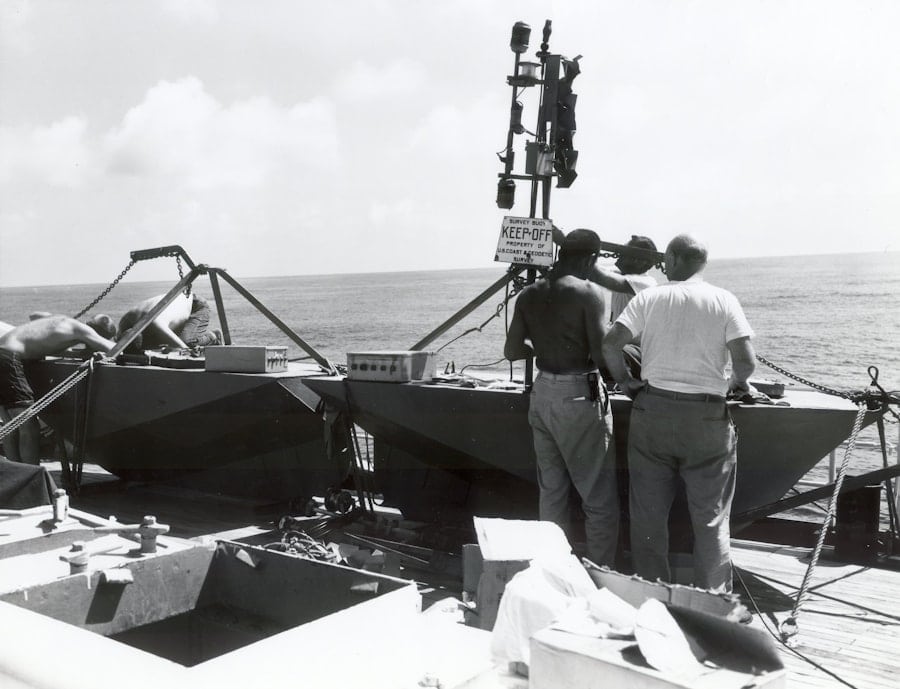CubeSats, a class of miniaturized satellites, have revolutionized the landscape of space exploration and research since their inception in the late 1990s. These small, standardized satellites typically measure 10x10x10 centimeters per unit, or “1U,” and can be combined into larger configurations, such as 2U, 3U, or even larger, depending on mission requirements. Originally developed as educational tools for universities, CubeSats have evolved into versatile platforms capable of conducting a wide range of scientific experiments and technology demonstrations.
Their compact size and modular design allow for innovative engineering solutions that can be tailored to specific missions, making them an attractive option for both academic institutions and commercial enterprises. The rise of CubeSats is closely tied to advancements in technology and a growing interest in space exploration. As the costs associated with launching traditional satellites have skyrocketed, CubeSats have emerged as a cost-effective alternative.
Their lightweight construction and reduced launch requirements enable a new generation of researchers and entrepreneurs to participate in space missions that were once the exclusive domain of government agencies and large corporations. This democratization of access to space has opened up new avenues for scientific inquiry and technological innovation, fostering a vibrant ecosystem of CubeSat development and deployment.
Key Takeaways
- CubeSats are small, standardized satellites that have revolutionized space research and exploration.
- Advantages of CubeSats include lower cost, faster development, and the ability to conduct a wide range of scientific experiments.
- CubeSats are lowering the cost of space exploration by reducing the need for large, expensive satellites and launch vehicles.
- CubeSats have had a significant impact on academic and commercial space research, enabling universities and companies to conduct their own missions.
- Challenges and limitations of CubeSats include limited power, communication, and propulsion capabilities, as well as the risk of space debris.
Advantages of CubeSats for Space Research
One of the most significant advantages of CubeSats is their ability to facilitate rapid prototyping and deployment of scientific instruments. Traditional satellite missions often require years of planning, development, and testing before launch. In contrast, CubeSats can be designed, built, and launched within a much shorter timeframe, sometimes in less than a year.
This agility allows researchers to respond quickly to emerging scientific questions or technological challenges, enabling them to conduct timely experiments that can yield valuable data. For instance, the Planetary Society’s LightSail project utilized a CubeSat to test solar sail technology in space, demonstrating the feasibility of propulsion methods that could be used for future interplanetary missions. Moreover, CubeSats can be deployed in swarms or constellations, enhancing their observational capabilities.
By launching multiple CubeSats into orbit simultaneously, researchers can gather data from different vantage points, providing a more comprehensive understanding of phenomena such as climate change or natural disasters. The use of multiple satellites also increases redundancy; if one satellite fails, others can continue to collect data. This approach has been exemplified by NASA’s ELaNa (Educational Launch of Nanosatellites) program, which has successfully launched numerous CubeSats from various educational institutions, allowing students to engage in hands-on space research while contributing to larger scientific goals.
How CubeSats are lowering the cost of space exploration
The financial implications of CubeSat technology are profound. Traditional satellite missions can cost millions or even billions of dollars, primarily due to the complexity of design, construction, and launch logistics. In stark contrast, CubeSats can be developed for a fraction of that cost—often in the range of tens to hundreds of thousands of dollars.
This significant reduction in expenses is largely attributed to their smaller size and simpler design requirements. The standardization inherent in the CubeSat model allows for economies of scale in manufacturing and launch services. Furthermore, the emergence of dedicated small satellite launch vehicles has further driven down costs associated with deploying CubeSats into orbit.
Companies like Rocket Lab and SpaceX have developed launch services specifically tailored for small satellites, offering rideshare opportunities that allow multiple CubeSats to share a single launch vehicle. This not only reduces the cost per satellite but also increases the frequency with which small satellites can be launched. As a result, organizations that previously could not afford to send instruments into space are now able to do so, leading to an explosion of innovative projects and research initiatives.
The impact of CubeSats on academic and commercial space research
CubeSats have had a transformative effect on both academic institutions and commercial enterprises engaged in space research. For universities, these small satellites provide an invaluable platform for students to gain practical experience in engineering, programming, and project management. Many universities have established CubeSat programs that allow students to design and build their own satellites as part of their curriculum.
This hands-on experience not only enhances students’ technical skills but also fosters collaboration between disciplines such as engineering, physics, and computer science. On the commercial side, CubeSats have opened new markets for satellite services and data collection. Startups and established companies alike are leveraging CubeSat technology to provide Earth observation data, telecommunications services, and scientific research capabilities at a fraction of the cost of traditional satellites.
For example, Planet Labs operates a fleet of small satellites that capture high-resolution images of the Earth’s surface daily, providing critical data for agriculture, forestry, and disaster response efforts. The ability to deploy numerous low-cost satellites has enabled these companies to offer services that were previously unattainable for many clients.
Challenges and limitations of CubeSats
Despite their many advantages, CubeSats are not without challenges and limitations. One significant issue is their constrained power supply and limited payload capacity. The small size of CubeSats restricts the amount of energy they can generate through solar panels and limits the types of instruments they can carry.
This can pose challenges for missions requiring extensive data collection or high-resolution imaging capabilities. For instance, while some CubeSats have successfully demonstrated technology for Earth observation, they may not achieve the same level of detail as larger satellites equipped with more sophisticated sensors. Another challenge lies in the crowded nature of low Earth orbit (LEO), where many CubeSats operate.
As more small satellites are launched into orbit, the risk of collisions increases significantly. This congestion poses a threat not only to individual CubeSat missions but also to the broader space environment. The potential for space debris generation is a growing concern among researchers and policymakers alike.
To mitigate these risks, effective tracking systems and regulatory frameworks must be established to ensure safe operations in LEO.
CubeSats and their role in international collaboration in space research
Benefits of Collaboration
Collaborative projects involving multiple nations can leverage the strengths and expertise of each participant while sharing the financial burden associated with satellite development and launch.
A Notable Example: QB50 Project
One notable example is the QB50 project, which involved over 50 universities from around the world working together to deploy a constellation of CubeSats for atmospheric research. This initiative aimed to study the lower thermosphere—a region of the atmosphere that is difficult to access with traditional satellites—by collecting data from multiple CubeSats operating at different altitudes.
Advancing Scientific Knowledge and Diplomacy
Such collaborative efforts not only advance scientific knowledge but also strengthen diplomatic ties between nations through shared goals in space exploration.
Future developments and potential applications of CubeSats
The future of CubeSat technology is promising, with ongoing advancements poised to expand their capabilities further. One area of development is the integration of artificial intelligence (AI) and machine learning algorithms into CubeSat operations. These technologies could enable autonomous decision-making processes for data collection and analysis, allowing CubeSats to adapt their missions based on real-time conditions or findings.
For instance, AI could help optimize imaging schedules based on cloud cover or other environmental factors. Additionally, as propulsion technologies continue to evolve, future CubeSats may incorporate advanced propulsion systems that allow for more complex mission profiles beyond simple low Earth orbit operations. Concepts such as electric propulsion or even solar sails could enable CubeSats to reach higher orbits or conduct interplanetary missions.
The potential applications are vast; from monitoring climate change effects on remote regions to conducting deep-space exploration missions that gather data about asteroids or other celestial bodies.
The democratization of space research through CubeSats
The advent of CubeSat technology represents a significant shift in how we approach space research and exploration. By lowering costs and increasing accessibility, these small satellites have democratized access to space for a diverse array of stakeholders—from academic institutions to commercial enterprises and international collaborations. The ability to conduct meaningful scientific research without the prohibitive costs associated with traditional satellite missions has opened up new frontiers in our understanding of Earth and beyond.
As we look toward the future, it is clear that CubeSats will continue to play an integral role in shaping the landscape of space exploration. Their versatility and adaptability make them ideal platforms for innovative research initiatives that address pressing global challenges while fostering international cooperation in science and technology. The ongoing evolution of CubeSat capabilities promises exciting developments that will further enhance our ability to explore the cosmos and understand our planet’s complex systems.
A related article to How CubeSats Are Democratizing Access to Space Research is “The Best Software for UX” which discusses the top software tools that are essential for creating a seamless user experience. This article highlights the importance of user experience design in various industries and provides insights into the best software options available. To learn more about enhancing user experience through software tools, check out




